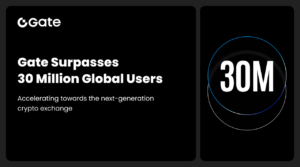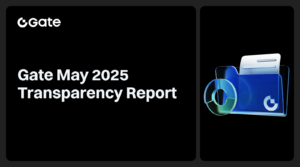DAM for Healthcare and Scientific Research: Streamlining Data Management

DAM for Healthcare and Scientific Research: Streamlining Data Management
As healthcare and scientific research continue to grow and evolve, so does the amount of data that is generated. From patient data to laboratory results, there is an immense amount of information that needs to be collected, organized, and analyzed. This is where Digital Asset Management (DAM) comes in. DAM is a system that can help healthcare and scientific organizations to streamline their data management processes, making it easier to store, organize, and access information. In this article, we will explore the benefits of DAM for healthcare and scientific research and how it can improve the efficiency and effectiveness of data management.
What is Digital Asset Management (DAM)?
Digital Asset Management (DAM) is a system that is used to store, organize, and manage digital assets such as images, videos, audio files, and documents. Digital Asset Management systems are designed to make it easier to manage large amounts of digital content, allowing users to easily locate, retrieve, and share files. In healthcare and scientific research, Digital Asset Management can be used to manage a wide range of digital assets, including patient records, laboratory data, research articles, and more.
Benefits of DAM for Healthcare and Scientific Research
There are several benefits of using Digital Asset Management in healthcare and scientific research. These include:
1. Centralized Data Management
DAM provides a centralized system for managing data, which means that all digital assets can be stored in one place. This makes it easier to organize data, locate files, and share information across departments and teams.
2. Improved Collaboration
Digital Asset Management allows multiple users to access and work on the same files simultaneously, which can improve collaboration and speed up the research process. Users can also leave comments and annotations on files, making it easier to share feedback and communicate ideas.
3. Enhanced Security
DAM systems provide advanced security features such as user permissions, encryption, and access controls. This ensures that sensitive data is protected from unauthorized access and helps to maintain compliance with regulations such as HIPAA and GDPR.
4. Increased Efficiency
Digital Asset Management systems automate many of the processes involved in managing digital assets, such as file conversion, metadata tagging, and version control. This saves time and reduces the risk of errors, allowing researchers to focus on their work instead of administrative tasks.
How DAM Works in Healthcare and Scientific Research
In healthcare and scientific research, DAM can be used to manage a wide range of digital assets. These can include:
1. Patient Records
Digital Asset Management can be used to store and manage patient records, including medical histories, test results, and diagnostic images. This allows healthcare professionals to easily access and share patient data, improving the quality of care and patient outcomes.
2. Laboratory Data
DAM can be used to manage laboratory data, including research data, test results, and experimental data. This allows researchers to easily store and retrieve data, and can also facilitate collaboration between different research teams.
3. Research Articles and Publications
DAM can be used to manage research articles and publications, including journal articles, conference papers, and research reports. This allows researchers to easily organize and access their work, and can also help to increase the visibility of research findings.
Choosing the Right DAM System
When choosing a DAM system for healthcare and scientific research, there are several factors to consider. These include:
1. Integration with Existing Systems
It is important to choose a DAM system that can integrate with existing healthcare and research systems, such as Electronic Health Records (EHRs) and Laboratory Information Management Systems (LIMS).
2. Scalability
DAM systems should be able to scale as the organization grows, to accommodate larger amounts of data and users.
3. Security and Compliance
DAM systems should have advanced security features to protect sensitive data and maintain compliance with industry regulations such as HIPAA and GDPR. It is important to choose a DAM system that is designed specifically for healthcare and scientific research to ensure that it meets the necessary security and compliance requirements.
4. User-Friendly Interface
A user-friendly interface is essential for a successful DAM system implementation. The system should be easy to use, with intuitive navigation and search functions, to encourage adoption by all users.
5. Customizability
Customizability is important for a DAM system, as different organizations have different needs and workflows. The system should be flexible and allow for customization to meet specific requirements.
Implementing DAM in Healthcare and Scientific Research
Implementing a DAM system in healthcare and scientific research requires careful planning and preparation. The following steps can help to ensure a successful implementation:
1. Identify Needs and Requirements
The first step in implementing a Digital Asset Management system is to identify the needs and requirements of the organization. This includes identifying the types of digital assets that need to be managed, the workflows involved in managing those assets, and the security and compliance requirements.
2. Choose the Right System
Once the needs and requirements have been identified, the next step is to choose the right DAM system. This involves evaluating different systems based on factors such as integration, scalability, security, and customizability.
3. Plan the Implementation
Planning the implementation of a DAM system is critical to its success. This involves defining the scope of the project, developing a timeline, and assigning responsibilities to different team members.
4. Train Users
Training users is essential for a successful implementation. Users should be trained on how to use the DAM system, including how to upload and manage digital assets, how to search for and retrieve files, and how to collaborate with others.
5. Monitor and Evaluate
After the DAM system has been implemented, it is important to monitor and evaluate its performance. This involves measuring user adoption, tracking system usage, and gathering feedback from users to identify areas for improvement.
Conclusion
Digital Asset Management (DAM) is a powerful tool for healthcare and scientific research organizations that need to manage large amounts of digital assets. DAM provides a centralized system for managing data, improves collaboration and security, and increases efficiency. When choosing a DAM system, it is important to consider factors such as integration, scalability, security, customizability, and user-friendliness. By implementing DAM in healthcare and scientific research, organizations can streamline their data management processes and focus on what matters most – improving patient care and advancing scientific knowledge.








